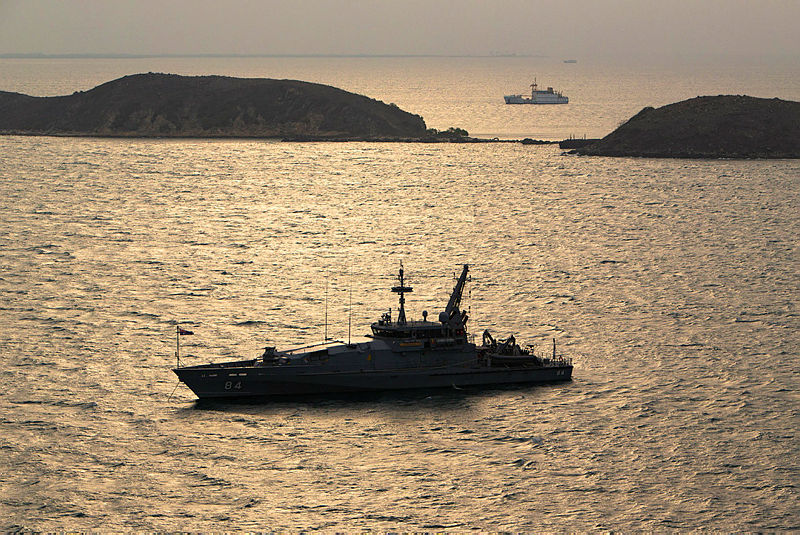
The executive summary of the US Senate Armed Services Committee’s (SASC’s) mark-up of the 2020 National Defense Authorization Act set the stage for a number of lively discussions at this year’s Shangri-La Dialogue. While many eyes were on China, the SASC’s mark-up highlights a serious potential friction point in the maritime domain between the US and Australia, namely pledges from both states to build ‘information fusion centres’ focused on the Pacific islands.
The SASC executive summary trumpets its adherence to the US national defence strategy as its organisational framework and highlights its proposal for a fusion centre under the strategy’s ‘Strengthening alliances’ heading. In fact, this proposal does exactly the opposite by failing to recognise a key ally’s strategic interests, regional leadership and existing security cooperation relationships.
As the Indo-Pacific construct takes shape in various forms across the region, the Pacific islands are a key subregion that has been somewhat neglected, to varying degrees, by most regional powers. Australia, however, far outstrips any other in its interest and engagement in the realm of maritime security. Though 2018 saw a number of high-ranking US officials visiting the region, it appears now that those visits weren’t necessarily conducted with full understanding of, or regard for, their allies’ existing strategic equities and plans. This is where the SASC’s mark-up represents a very real opportunity for the US, a relative latecomer to the Pacific island security scene, to snatch defeat from the jaws of victory by attempting to lead a maritime security effort that already has a clear leader.
In the release, the SASC designates US Indo-Pacific Command as responsible for ‘establish[ing] one or more open-source intelligence fusion centers to enhance cooperation with Pacific Island countries’. This proposal, in one breath, presents multiple opportunities to severely hinder the development of maritime security in the Southwest Pacific.
As noted, the US proposal directly overlaps with allied Australia’s stated plans to provide the same capability within the region. Foreign Minister Marise Payne announced Australia’s commitment to building a Pacific fusion centre during the 2018 Pacific Islands Forum in Nauru. Planned as an interagency centre, the Australian construct would support Pacific island states with fusing together relevant maritime security information and communicating with partners about key regional threats such as illegal fishing, people trafficking, drug smuggling and maritime safety.
The Australian proposal would fit neatly alongside existing security cooperation arrangements, namely the Pacific Maritime Security Program, which will be providing patrol vessels and aerial surveillance to 12 Pacific island countries over the next several years. The program is the successor to Australia’s Pacific Patrol Boat Program, which provided a number of boats to Pacific island states between 1987 and 1997. It stands to reason that the nation providing the surface patrol and aerial surveillance support required for maritime domain awareness should also lead the effort in fusing, analysing and disseminating that data.
The announcement from the US represents a clear failure to respect Australia’s natural and evident leadership in the region, as well as an easily avoided failure to coordinate with a key ally.
Duplication of security cooperation efforts raises the issue of whether partners have the capacity to absorb the new initiative. Even the most capable navies and maritime law enforcement entities in the Southwest Pacific lack the patrol vessels and personnel to safeguard their often-vast exclusive economic zones, let alone participate in multiple multinational information-sharing efforts. A second, US-led centre, therefore, threatens to become a burden on the very countries it intends to help. The prospect of sending personnel to two separate, yet similar, fusion centres would likely force countries to choose between them, resulting in inconsistent participation and dashing hopes of a cohesive regional maritime picture.
Two centres competing for business will create so-called information stovepipes and limit the operational utility of both centres. The US announcement of ‘one or more fusion centers’ sounds as if American policymakers are under the impression that more is always better, which could not be further from the truth in this case.
From an organisational perspective, directing Indo-Pacific Command to lead this effort risks militarising an issue that is at its core a constabulary one. While the US Department of Defense might have ready access to more intelligence capabilities, it may not be a good fit for leading a fusion centre and engaging with a mix of small navies and maritime law enforcement agencies. An organisation like Australia’s Maritime Border Command is far better positioned and has far more credibility in the region for approaching the complicated issue of creating a multinational information-sharing construct for law enforcement in the Pacific islands region.
Unless there has been a silent withdrawal of the Australian pledge to go forward with its Pacific fusion centre concept, the US has put itself broadside into the waves with its proposal. There may still be time to right the ship, as the NDAA has yet navigate its way through the legislative process, but swift action must be taken. If the US government wants to build unclassified maritime domain awareness among the Pacific islands, it would be better served by playing a supporting role in an Australian production, for the sake of both regional maritime security and the bilateral relationship.

